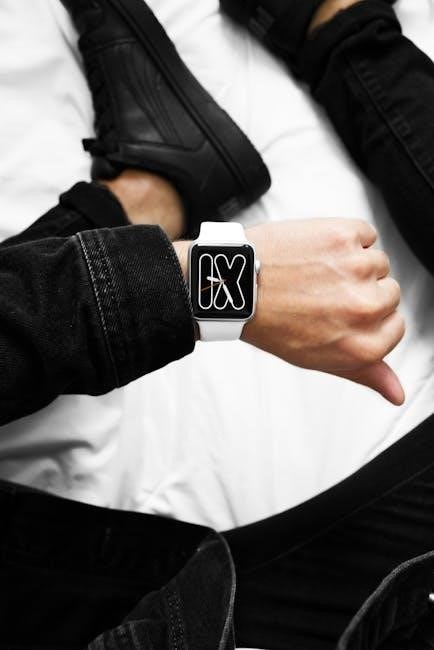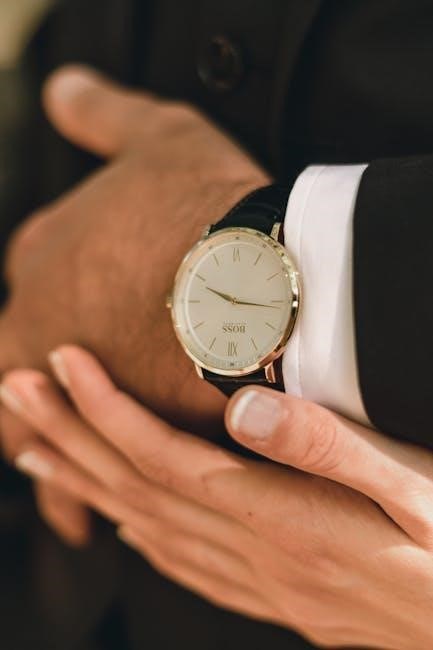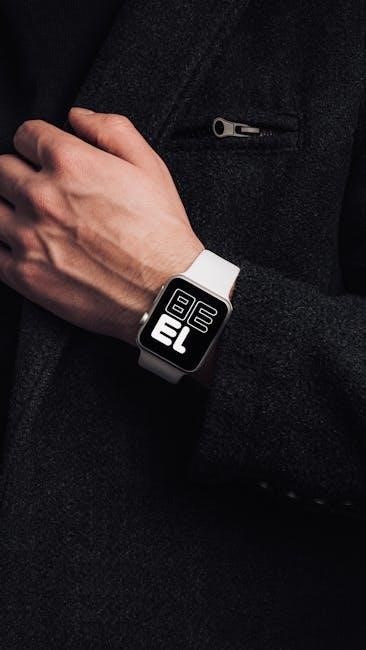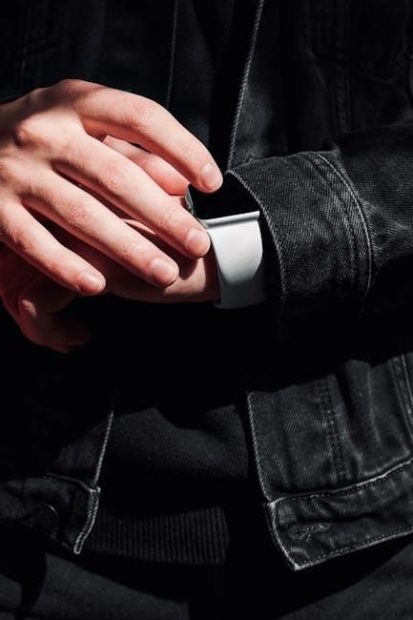Understanding the right Apple Watch size for your wrist is crucial for comfort, functionality, and style. This guide helps you choose the perfect fit based on wrist size, model options, and band compatibility, ensuring optimal performance and comfort for daily use.
Understanding the Importance of Wrist Size for Apple Watch
Wrist size plays a vital role in ensuring a comfortable and functional Apple Watch experience. Proper fit is essential for accurate health monitoring, as features like heart rate and activity tracking require snug contact with the skin. A well-fitting watch also prevents discomfort and ensures the device stays securely in place during daily activities. Additionally, appropriates sizing enhances the overall aesthetic appeal, making the watch look proportional on the wrist. By considering wrist size, users can select the ideal model and band size, optimizing both performance and comfort for a seamless experience.
Apple Watch Models and Their Respective Sizes
The Apple Watch is available in various models, including the Series 7 with 41mm and 45mm options, and the Ultra with a larger 49mm size.
Apple Watch Series 7: 41mm and 45mm Options
The Apple Watch Series 7 offers two sizes: 41mm and 45mm, catering to different wrist sizes. The 41mm model is ideal for smaller wrists, providing a sleek and portable design. It is perfect for those who prefer a more discreet look and worry less about bumping the watch against objects, especially during workouts. On the other hand, the 45mm option suits larger wrists, offering a slightly bigger display for easier navigation. Both sizes feature the same functionality, including fitness tracking, health monitoring, and wireless connectivity. Choosing the right size ensures a comfortable fit and enhances the overall user experience.
Apple Watch Ultra: Larger 49mm Size for Enhanced Durability
The Apple Watch Ultra features a larger 49mm case, designed for enhanced durability and rugged use. This size is ideal for those with larger wrists or who prefer a more robust timepiece. The Ultra model is built to withstand extreme conditions, making it perfect for outdoor enthusiasts. It offers a prominent display for better visibility and includes exclusive bands like the Alpine Loop and Trail Loop, which are available in various sizes to ensure a secure fit. The Ocean Band, while one-size-fits-all, complements the Ultra’s versatility. This model balances size, functionality, and style, catering to users seeking a durable and feature-rich smartwatch experience.

How to Measure Your Wrist for the Perfect Fit
Measure your wrist just below the wrist bone using a flexible tape. Ensure a snug fit without overtightening to determine the ideal size for your Apple Watch band.
Using a Measuring Tape: Step-by-Step Guide
To measure your wrist for an Apple Watch, wrap a flexible measuring tape around your wrist, positioning it just below the wrist bone. Ensure the tape is snug but not overly tight. Note the circumference in inches or centimeters. This measurement helps determine the correct band size. For accuracy, keep your wrist relaxed and avoid twisting the tape. If you don’t have a flexible tape, a piece of string and a ruler can work. Wrap the string around your wrist, mark the overlap point, and measure the length with the ruler. This method ensures a precise fit for your Apple Watch band.
Choosing the Right Band Size for Comfort and Security
Selecting the correct band size ensures your Apple Watch stays secure and comfortable. After measuring your wrist, refer to Apple’s sizing chart to match your measurement with available band options. A proper fit allows the watch to stay in place without slipping, while also avoiding tightness that could cause discomfort. Adjustable bands offer flexibility, accommodating slight size variations, while fixed bands provide a precise fit. Ensure the band is snug enough to prevent movement but not so tight that it restricts circulation. The right band size is essential for accurate health monitoring and all-day wearability, making it a crucial step in your Apple Watch setup.
Apple Watch Band Options and Compatibility
Apple Watch offers diverse bands, from Solo Loop to Sport Band, ensuring compatibility across models. Each band type caters to different wrist sizes and preferences, providing a secure and stylish fit for enhanced comfort during daily activities and workouts.
Different Band Types: Solo Loop, Sport Band, and More
Apple Watch offers a variety of bands to suit every style and wrist size. The Solo Loop is a seamless, stretchable band available in multiple sizes, ensuring a snug fit without buckles. The Sport Band, made from durable fluoroelastomer, is lightweight and sweat-resistant, ideal for workouts. Leather bands provide a sophisticated look, while the Milanese Loop offers a sleek, adjustable design. Additionally, the Trail Loop and Alpine Loop, designed for outdoor enthusiasts, feature rugged designs for enhanced durability. Each band type is crafted to deliver comfort and security, catering to diverse preferences and activities, ensuring the perfect combination of style and functionality.
Adjustable and Fixed Band Options for Various Wrist Sizes
Apple Watch bands come in adjustable and fixed options to accommodate different wrist sizes. Adjustable bands, like the Sport Band or Solo Loop, offer flexibility with multiple sizing options, ensuring a secure fit for various wrist circumferences. Fixed bands, such as leather or metal options, are designed for specific wrist sizes, requiring precise measurement for comfort. The Alpine Loop and Trail Loop, exclusive to the Apple Watch Ultra, feature adjustable designs tailored for outdoor activities. These options ensure that users can find a band that fits perfectly, whether for everyday wear or specialized use, enhancing both comfort and functionality.

Case Materials and Their Impact on Fit
Aluminum cases are lightweight, ideal for smaller wrists, while stainless steel offers durability and a premium feel, fitting larger wrists comfortably without compromising on style or comfort.
Aluminum vs. Stainless Steel: Weight and Comfort Differences
Aluminum Apple Watches are significantly lighter, making them ideal for smaller wrists and everyday wear, while stainless steel models offer a more luxurious feel and durability, suiting larger wrists.
Features to Consider Based on Wrist Size
Choose the right Apple Watch size to optimize display visibility and functionality, ensuring easy navigation and a comfortable fit for all wrist sizes and preferences.
Optimizing Display Size for Easier Navigation
Larger Apple Watch models like the Ultra with a 49mm case offer a bigger display, enhancing readability and ease of use. Smaller models, such as the 41mm Series 7, provide a compact yet clear interface. Choosing the right size ensures that apps and watch faces are easily navigable without compromising comfort. The display size impacts how you interact with features like fitness tracking, notifications, and app controls. A well-sized watch face allows for intuitive touch interactions and a seamless user experience, making it essential to consider wrist size when selecting your Apple Watch model for optimal functionality and satisfaction.

Tips for Wearing Your Apple Watch Comfortably
Ensure a snug fit for accurate health monitoring without restricting movement. Avoid over-tightening to prevent discomfort and skin irritation, allowing for proper airflow and long-lasting wearability throughout the day.
Snug Fit for Accurate Health Monitoring
A snug fit is essential for accurate health monitoring. The Apple Watch relies on proper contact with your wrist to track metrics like heart rate, ECG, and blood oxygen levels. A loose fit can lead to inaccurate readings, while an overly tight fit may cause discomfort or skin irritation. Ensure the watch band is adjusted to fit comfortably, allowing for a little movement without slipping. This balance ensures reliable data collection and enhances overall wearer comfort. Adjustable bands, such as the Solo Loop, provide flexibility to achieve the perfect fit. Regularly check and adjust the band to maintain optimal comfort and performance throughout the day.
Avoiding Over-Tightening to Prevent Discomfort
Avoiding over-tightening your Apple Watch is crucial for preventing discomfort and potential skin irritation. While a snug fit is necessary for accurate health monitoring, excessive tightness can restrict blood flow and cause discomfort, especially during extended wear. Apple Watch bands, such as stainless steel or aluminum models, can feel rigid if overtightened. Opt for adjustable bands like the Sport Band, which offer breathability and flexibility. Regularly check the fit and loosen the band if it feels too tight. This ensures long-term comfort while maintaining functionality. Proper adjustment balances health monitoring accuracy with wearer ease, making it essential to avoid over-tightening for a pleasant user experience.

Setting Up Your Apple Watch
To set up your Apple Watch, place it on your wrist snugly and press the side button to turn it on. Bring your iPhone near the watch, then follow the on-screen instructions to complete the pairing process; This ensures seamless integration with your iPhone and unlocks all features for a personalized experience.
Pairing with iPhone and Initial Setup Process
To pair your Apple Watch with your iPhone, place the watch on your wrist and press the side button to turn it on. Bring your iPhone near the watch, and a pairing prompt will appear on both devices. Tap “Continue” on your iPhone and follow the on-screen instructions to complete the pairing process. Use the Apple Watch app on your iPhone to customize settings, sync data, and enable features like health monitoring or notifications. Ensure your iPhone is updated to the latest iOS version for compatibility. After pairing, explore the app to personalize your watch face, set up health features, and activate additional services like Siri or Apple Pay for a seamless experience.
